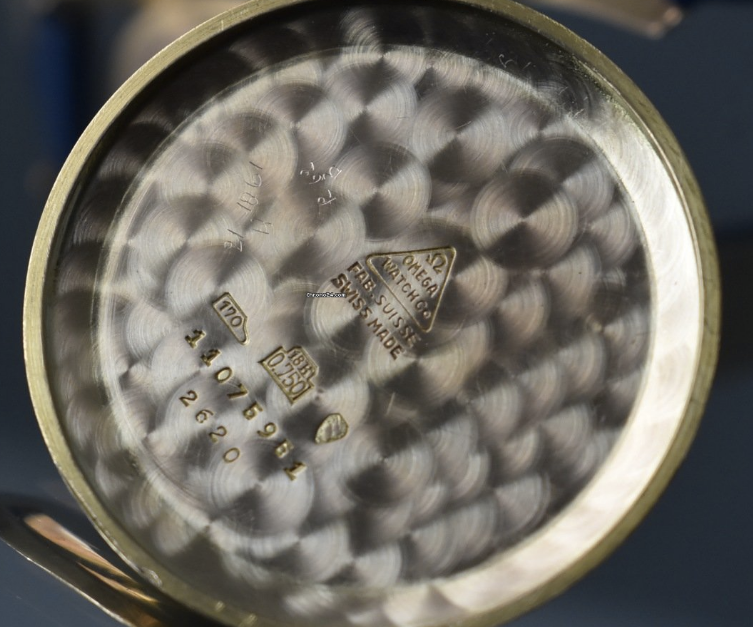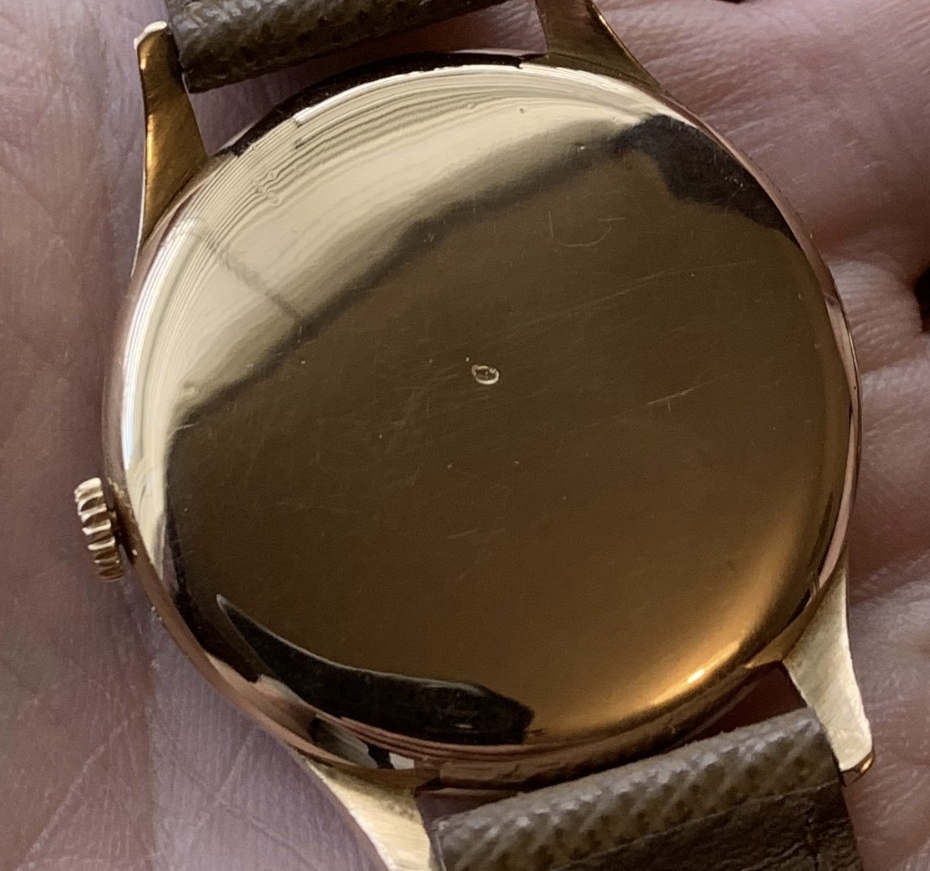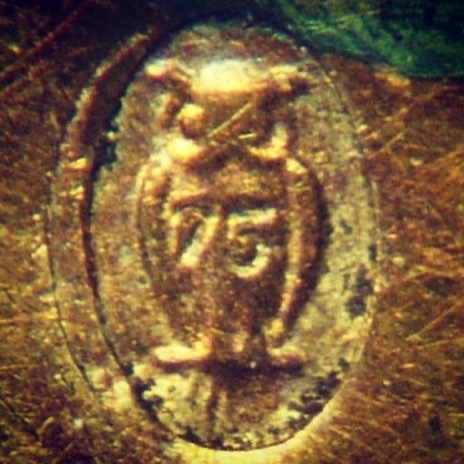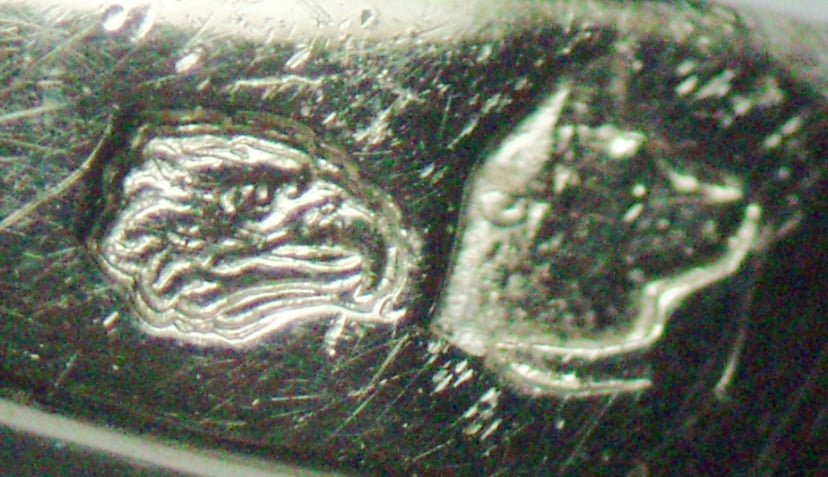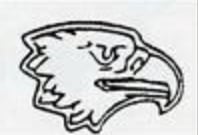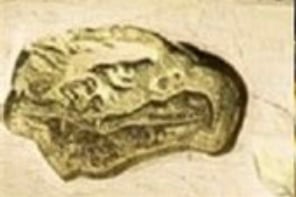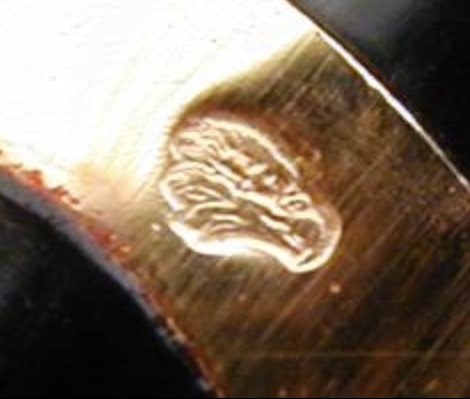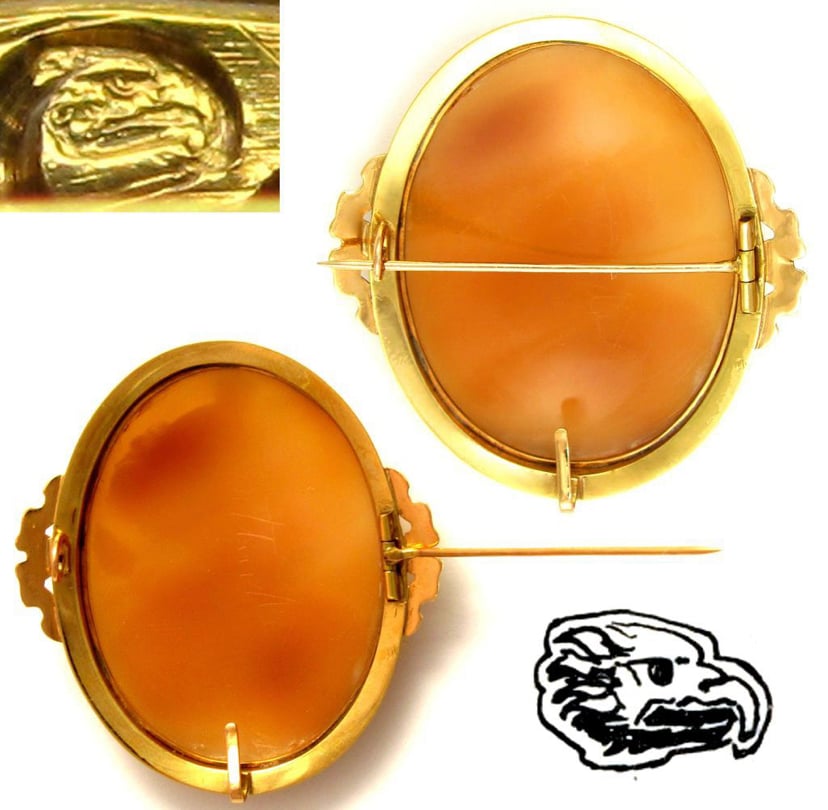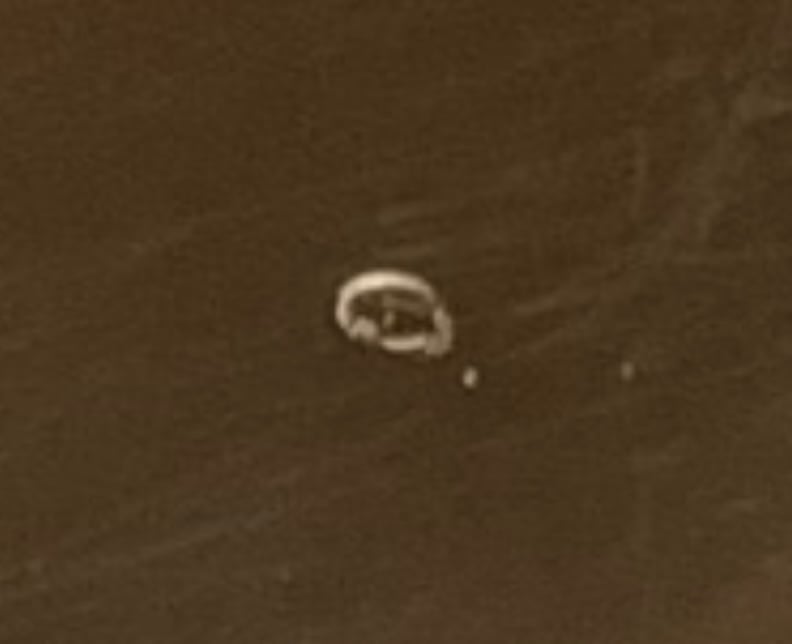Just how rare is this ?
François Pépin
·Ok, just a little update
The unusual marks inside the case are similar but not identical to some I’ve seen in other Swiss cases such as Movado though as stated not identical so not conclusive.
I decided to contact David Boettcher FBHI to see if he could shed any light on the case.
For those of you not familiar with David, here is a link to his very informative website
https://www.vintagewatchstraps.com/casemarks.php
To reiterate I could not understand why this watch WAS imported into France as a complete watch, not as a raw movement. After some correspondence sending images of the case and movement and waiting for a response I eventually received a reply from David confirming that “the case would have been made in Switzerland” 😀
Now, I know it’s not signed Omega but I don’t think it’s unreasonable to assume that the case maker wasn’t obligated to stamp Omega into the case at that time. We are talking circa 1948/9 and it is well documented that Dennison and at least one other Omega contracted maker (JPB) didn’t stamp their cases Omega during this period.
As David is a leading authority in this field I’m happy with his assessment.
As a footnote I would add that the quality of the case is as good as any other Omega case of the period. The design is similar/identical ?? to the 2609/2181 Jumbo references, it’s just not stamped as such. Still a 100% original Bobby Dazzler though ...
View attachment 1159332
Hello,
I do not know David Boettcher, and I do not wish to question his authority. I would be glad to see the examples he used to frame his analysis. But I do not agree at all to his and your conclusions.
The 750 with this kind of geometric figure can be found in Swiss made cases, but also in South America's and others. And in Swiss cases, it is usually much better done - compare for instance with the pic posted by Hoipolloi. Moreover, in a 18K gold case of that period, there should be a Helvetica. I do not have the knowledge to say it was absolutley mandatory, but in my exeprience it is clear that this case is not Swiss made. I do not see any reason to think it is, except your wish to have a very particular watch (which I understand!).
I will add that a 1940's Omega with a Swiss gold, non Omega signed, case in unheard of... Which, in that circumstances, does not mean it is rare, but that it does not exist! The comparison with Dennison's cases is irrelevant as they were not Swiss made. The last option I could be that it is some kind of unauthorised (or not fully authorized) Swiss gold production. But why on earth considering such a weird conclusion as others are much relevant?
Sorry again for the bad news. I may be wrong of course, but I think all I said is pretty well founded.
Cheers,
François
Syrte
·David Boettscher is recognized as an authority on the history of Francois Borgel cases and the Taubert cases that followed them, as well as with regards to trench watches and British market watches.
But while his interest may be very broad I’ve never heard of him being authoritative on anything related to the French market, he’s an enthusiast just like many people here and I don’t see why he’d be more of an authority than anyone here on cases imported from Switzerland into France.
@François Pépin being a French collector of Omega watches, I’d find him more, or at the very least equally qualified.
But while his interest may be very broad I’ve never heard of him being authoritative on anything related to the French market, he’s an enthusiast just like many people here and I don’t see why he’d be more of an authority than anyone here on cases imported from Switzerland into France.
@François Pépin being a French collector of Omega watches, I’d find him more, or at the very least equally qualified.
DirtyDozen12
·To summarize the evidence ...
Case-back markings, present on a typical 18K gold Omega from the late 1940s with a Swiss case:
1. 18K/ 0.750
2. Helvetica
3. Poinçons de maître
4. Omega Watch Co
5. Fab. Suisse/ Swiss Made
6. case number
7. reference number
https://www.chrono24.ca/omega/oversized-calatrava-38mm-rose-gold-honeycomb-dial-265--id12455522.htm
Case-back markings, present on your Omega from the late 1940s:
1. 18K/ 0.750
2. Unidentified triangular
3. Another unidentified (surrounded by black ink)
4. Possible eagle's head (outside)
Despite David Boettcher's expertise on case markings, without explaining the absence of markings such as a Helvetica and a poinçons de maître (for a start), it seems unreasonable to accept his conclusion that "the case would have been made in Switzerland." Confirmation of the presence of an eagle's head marking on the outside of the case-back would further contradict Boettcher's conclusion, as it would suggest that the case was made in France.
Case-back markings, present on a typical 18K gold Omega from the late 1940s with a Swiss case:
1. 18K/ 0.750
2. Helvetica
3. Poinçons de maître
4. Omega Watch Co
5. Fab. Suisse/ Swiss Made
6. case number
7. reference number
https://www.chrono24.ca/omega/oversized-calatrava-38mm-rose-gold-honeycomb-dial-265--id12455522.htm
Case-back markings, present on your Omega from the late 1940s:
1. 18K/ 0.750
2. Unidentified triangular
3. Another unidentified (surrounded by black ink)
4. Possible eagle's head (outside)
Despite David Boettcher's expertise on case markings, without explaining the absence of markings such as a Helvetica and a poinçons de maître (for a start), it seems unreasonable to accept his conclusion that "the case would have been made in Switzerland." Confirmation of the presence of an eagle's head marking on the outside of the case-back would further contradict Boettcher's conclusion, as it would suggest that the case was made in France.
Flip
·David Boettscher is recognized as an authority on the history of Francois Borgel cases and the Taubert cases that followed them, as well as with regards to trench watches and British market watches.
But while his interest may be very broad I’ve never heard of him being authoritative on anything related to the French market, he’s an enthusiast just like many people here and I don’t see why he’d be more of an authority than anyone here on cases imported from Switzerland into France.
@François Pépin being a French collector of Omega watches, I’d find him more, or at the very least equally qualified.
I’m not saying David’s assessment is definitive more that I am happy with it
@François Pépin I tend to agree with you François with the exception on your thought about this case being South American
I believe it is European, likely produced in a neighbouring country not flown half way across the world to be imported into France. Whether it is an unauthorised or not I used other authorised case makers as examples of not stamping their cases during the same period
Bill Sohne
··Bill @ ΩFHi @Flip
Well the good thing is your watch is being fully documented in this thread. For other who might know more can add additional info.
If you want to know more about your watch. I would try to get an extract using just the movement serial number if that is possible. Then you might know when and what condition it left Bienne... ( caseed or sold as movemement and dial etc...).
Good Hunting
Bill
Well the good thing is your watch is being fully documented in this thread. For other who might know more can add additional info.
If you want to know more about your watch. I would try to get an extract using just the movement serial number if that is possible. Then you might know when and what condition it left Bienne... ( caseed or sold as movemement and dial etc...).
Good Hunting
Bill
Flip
·Hi @Flip
Well the good thing is your watch is being fully documented in this thread. For other who might know more can add additional info.
If you want to know more about your watch. I would try to get an extract using just the movement serial number if that is possible. Then you might know when and what condition it left Bienne... ( caseed or sold as movemement and dial etc...).
Good Hunting
Bill
I wrote to Omega to see if that was possible as it most likely left the factory as a raw movement. I’d hoped that they could elaborate but I received the usual generic email telling me nothing I didn’t already know.
I hope that if I do pay for an EOA it confirms where and when ( the movement ) was delivered to, at least then it would hopefully confirm the case origin.
@DirtyDozen12 I may not be able to photograph the hallmark due to lack of technology but I can still tell the difference between an eagle’s head and The head and body of an Owl ! 😉 It’s an Owl, at least if it was an Eagle head then I’d know it was a french case. Admittedly the photo of the caseback does give the impression that it could be an eagle head but under a loop it’s clear it’s an Owl.
I’m struggling to improve on these but from them you can make out it’s the Owl import hallmark. That proves it is not French
compare to this ...
Hopefully you can now see that it is despite the poor quality photos
Edited:
Syrte
·As a French person who’s seen a good number of French hallmarks, there is absolutely no doubt in my mind the hallmark at the back is a French 18K eagle head hallmark.
Flip
·As a French person who’s seen a good number of French hallmarks, there is absolutely no doubt in my mind the hallmark at the back is a French 18K eagle head hallmark.
Eagle Heads, various photos etc not one is in an oval, look at the shape. Even with poor photos you can clearly see the oval shape even if you can’t make out the Owl, which I have already stated I can see clearly under a loop
It’s an Owl
François Pépin
·Though I respect very much Syrte
(@Syrte ) as a person and as a watch expert, I do believe it could be an owl. Actually, it is impossible to tell from the pics provided, but it is true an eagle does not usually come with an oval. Moreover, the other hallmarks are not French.
That said, I clearly do not think it is a Swiss made case, and I am not sure to understand anymore the point of this thread. We have dealt with many questions, and as far as I am concerned, it is a foreign made case imported to France. Could be from South America, could be from somewhere else. But not from a country with specific and well known hallmarks.
As Bill said, to know more we would need now an extract. Or we would need to identify the triangle hallmark - but it will be hard as it looks pretty fade.
Cheers,
François
(@Syrte ) as a person and as a watch expert, I do believe it could be an owl. Actually, it is impossible to tell from the pics provided, but it is true an eagle does not usually come with an oval. Moreover, the other hallmarks are not French.
That said, I clearly do not think it is a Swiss made case, and I am not sure to understand anymore the point of this thread. We have dealt with many questions, and as far as I am concerned, it is a foreign made case imported to France. Could be from South America, could be from somewhere else. But not from a country with specific and well known hallmarks.
As Bill said, to know more we would need now an extract. Or we would need to identify the triangle hallmark - but it will be hard as it looks pretty fade.
Cheers,
François
François Pépin
·David Boettscher is recognized as an authority on the history of Francois Borgel cases and the Taubert cases that followed them, as well as with regards to trench watches and British market watches.
But while his interest may be very broad I’ve never heard of him being authoritative on anything related to the French market, he’s an enthusiast just like many people here and I don’t see why he’d be more of an authority than anyone here on cases imported from Switzerland into France.
@François Pépin being a French collector of Omega watches, I’d find him more, or at the very least equally qualified.
Thank you Syrte for your message and these informations!
DirtyDozen12
·@Flip Thanks for the additional photos of the marking on the outside of the case-back. At this point I am in agreement with @François Pépin and @Bill Sohne. Based on the evidence, the case is not Swiss, might have been imported to France, and is of unknown origin. Identifying the present markings or retrieving information from Omega's archive appear to be the next logical steps.
MSNWatch
··Vintage Omega AficionadoHello,
I do not know David Boettcher, and I do not wish to question his authority. I would be glad to see the examples he used to frame his analysis. But I do not agree at all to his and your conclusions.
The 750 with this kind of geometric figure can be found in Swiss made cases, but also in South America's and others. And in Swiss cases, it is usually much better done - compare for instance with the pic posted by Hoipolloi. Moreover, in a 18K gold case of that period, there should be a Helvetica. I do not have the knowledge to say it was absolutley mandatory, but in my exeprience it is clear that this case is not Swiss made. I do not see any reason to think it is, except your wish to have a very particular watch (which I understand!).
I will add that a 1940's Omega with a Swiss gold, non Omega signed, case in unheard of... Which, in that circumstances, does not mean it is rare, but that it does not exist! The comparison with Dennison's cases is irrelevant as they were not Swiss made. The last option I could be that it is some kind of unauthorised (or not fully authorized) Swiss gold production. But why on earth considering such a weird conclusion as others are much relevant?
Sorry again for the bad news. I may be wrong of course, but I think all I said is pretty well founded.
Cheers,
François
Occam's Razor - Looks like a typical contract case likely South American in terms of the quality. I am confident this is not a swiss made case. IMO to go against this conclusion will require stronger evidence than what has been discussed here so far.
Syrte
·I’m happy to be proven wrong but the picture above is blown up to the point there is no resolution left. when it’s not blown up and with no distortion, I don’t see an oval at all.
maybe I’m blind...but I clearly see the shape of an eagle head with its curved bill sticking out.
There’s a depression around the print but unless you can take a picture with a loupe that will show an owl in an oval, I only see a shape that’s consistent with a printed eagle head.
maybe I’m blind...but I clearly see the shape of an eagle head with its curved bill sticking out.
There’s a depression around the print but unless you can take a picture with a loupe that will show an owl in an oval, I only see a shape that’s consistent with a printed eagle head.
Edited:
spacemission
·For adding info, Universal Geneve cases were made with original stamp and without reference number for Spain and Argentina.
Flip
·As a French person who’s seen a good number of French hallmarks, there is absolutely no doubt in my mind the hallmark at the back is a French 18K eagle head hallmark.
I’m happy to be proven wrong but the picture above is blown up to the point there is no resolution left. when it’s not blown up and with no distortion, I don’t see an oval at all.
maybe I’m blind...but I clearly see the shape of an eagle head with its curved bill sticking out.
There’s a depression around the print but unless you can take a picture with a loupe that will show an owl in an oval, I only see a shape that’s consistent with a printed eagle head.
Anyway, someone kindly gave me the instruction on how to photograph correctly through a loop ...View attachment 1159729
Like I said, it’s an Owl
So this Owl hallmark proves without any doubt that this case is not French, nor was it imported as a raw movement into France, it was imported as a complete watch, from a non treaty country, with the gold meeting France’s strict standards. This also proves it was not made for the French Market, so why was it imported into France ?
Flip
·For adding info, Universal Geneve cases were made with original stamp and without reference number for Spain and Argentina.
François Pépin
·I don’t think that picture helps especially as you are looking at it from the wrong angle ! The eagle head faces to the right anyway not left as that image suggests.
Anyway, someone kindly gave me the instruction on how to photograph correctly through a loop ...View attachment 1159729
Like I said, it’s an Owl
So this Owl hallmark proves without any doubt that this case is not French, nor was it imported as a raw movement into France, it was imported as a complete watch, from a non treaty country, with the gold meeting France’s strict standards. This also proves it was not made for the French Market, so why was it imported into France ?
Not sure I can see the 44 number you talked about before, but that is an owl for sure!
Why was this watch imported to France? Actually, I do not think there necessarily should be a particular reason. Could be anything as the owl is not only stamped on new items. The watch could have entered in France later and been stamped in an assay office.
spacemission
·Thanks for the heads up 😀 Any photo examples you can share ? Obviously I should extend my searches across other Swiss brands. 👍
I'm speaking about my grandfather's watch. At the beginning of 60s he bought a new 18K gold Universal Geneve in Spain. When he asked me for a service long ago I opened it and I saw the specimen. I talked with a good friend and collector and we deliberated carefully about all of this. I'll try to take pictures 👍
